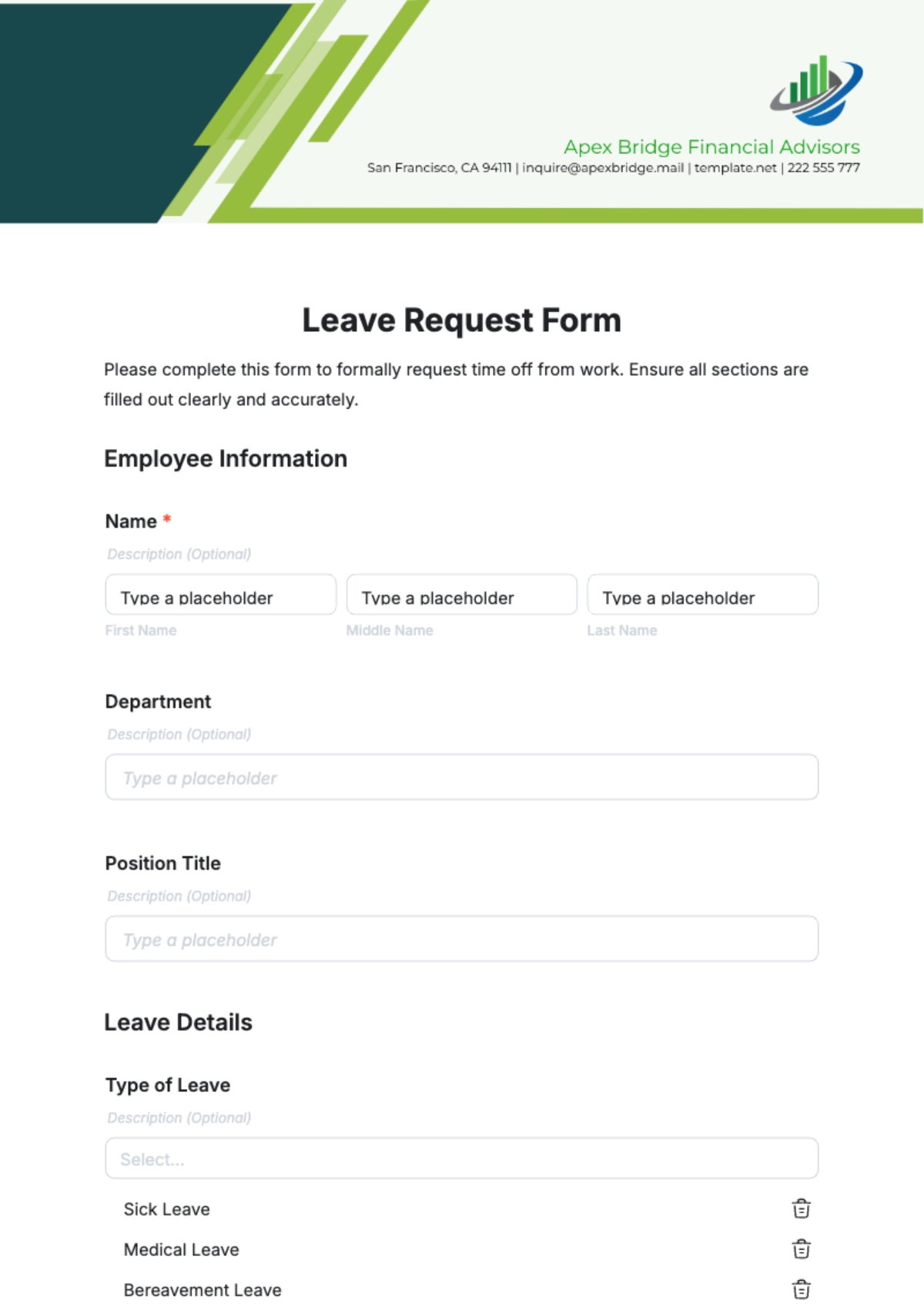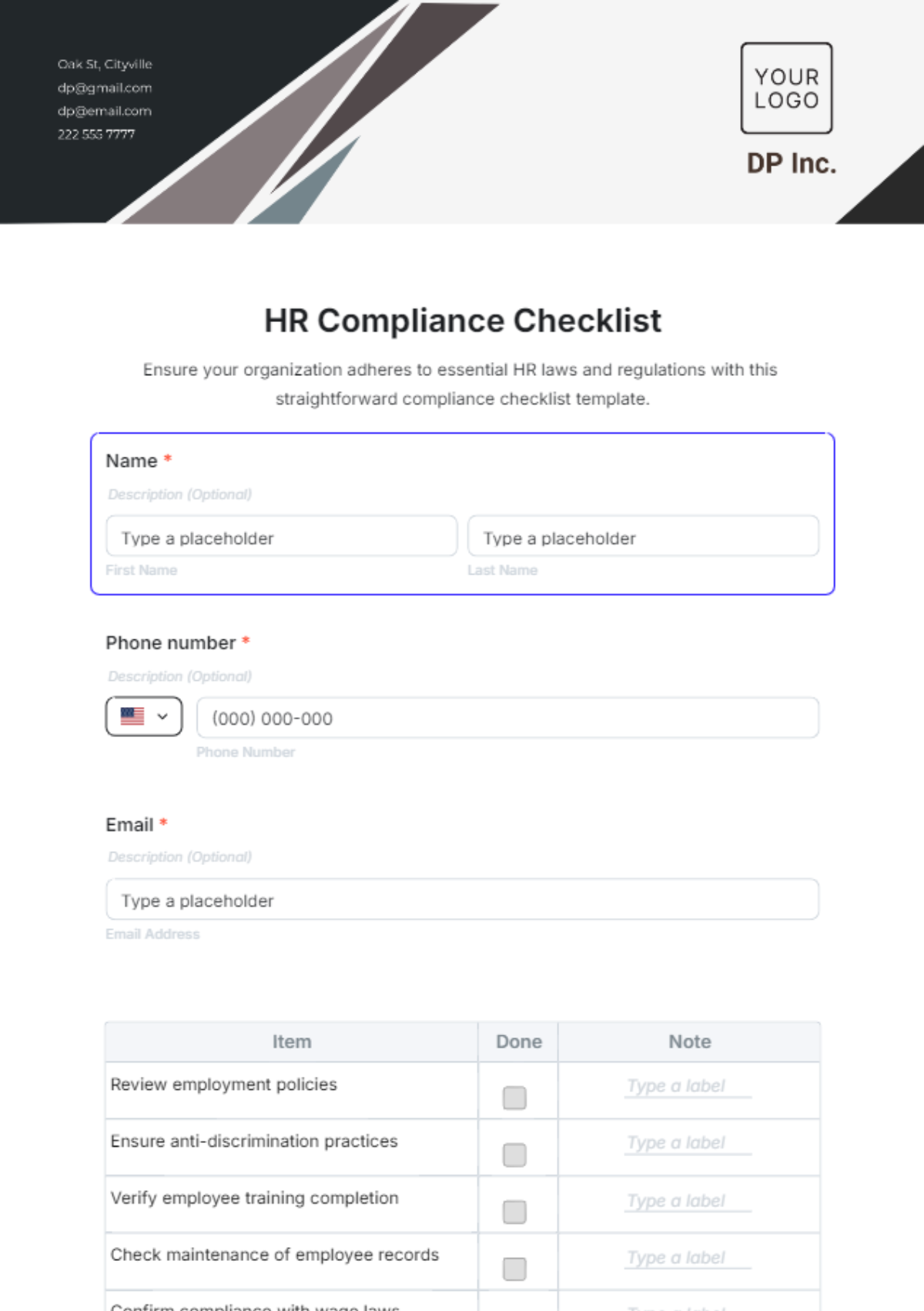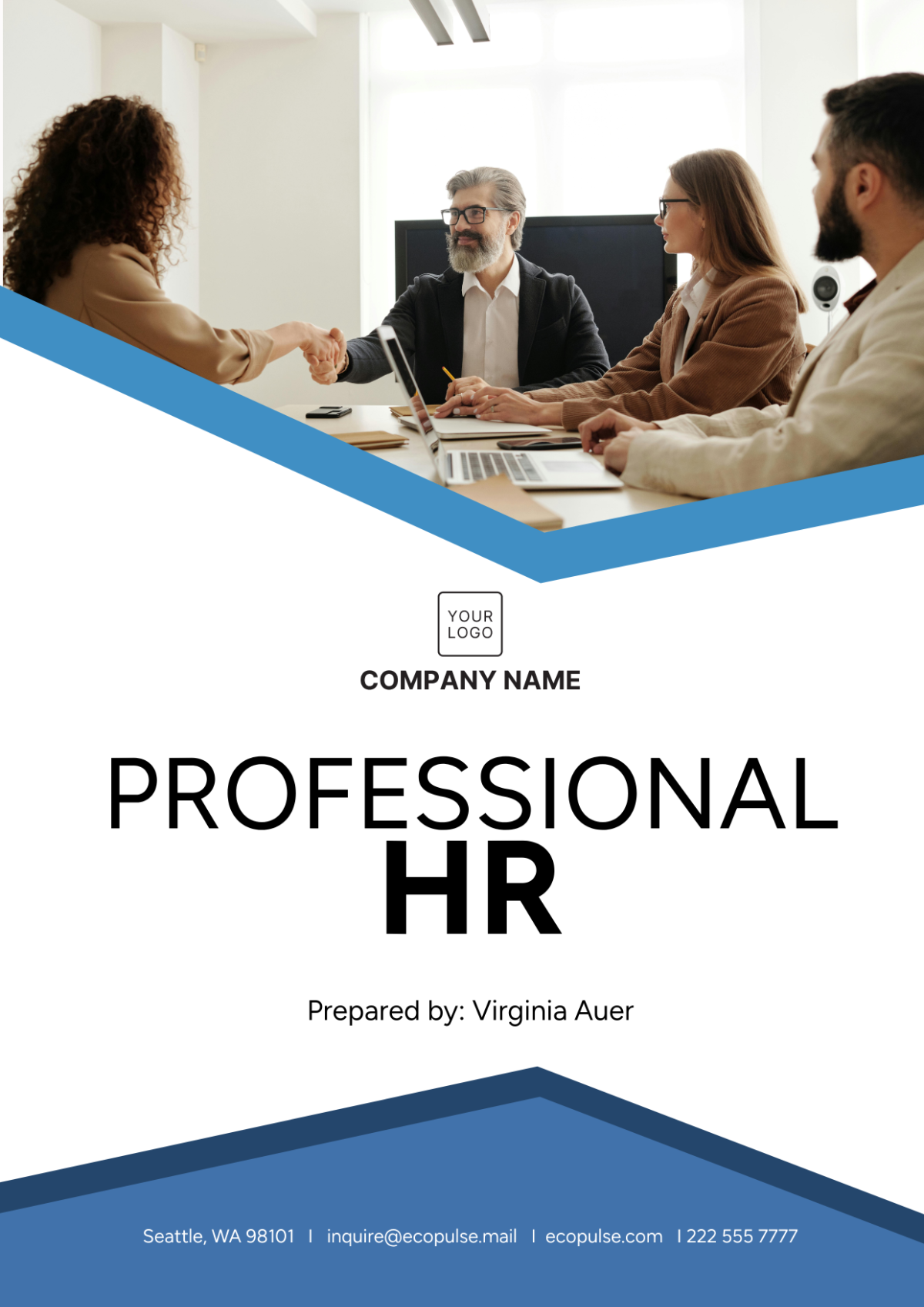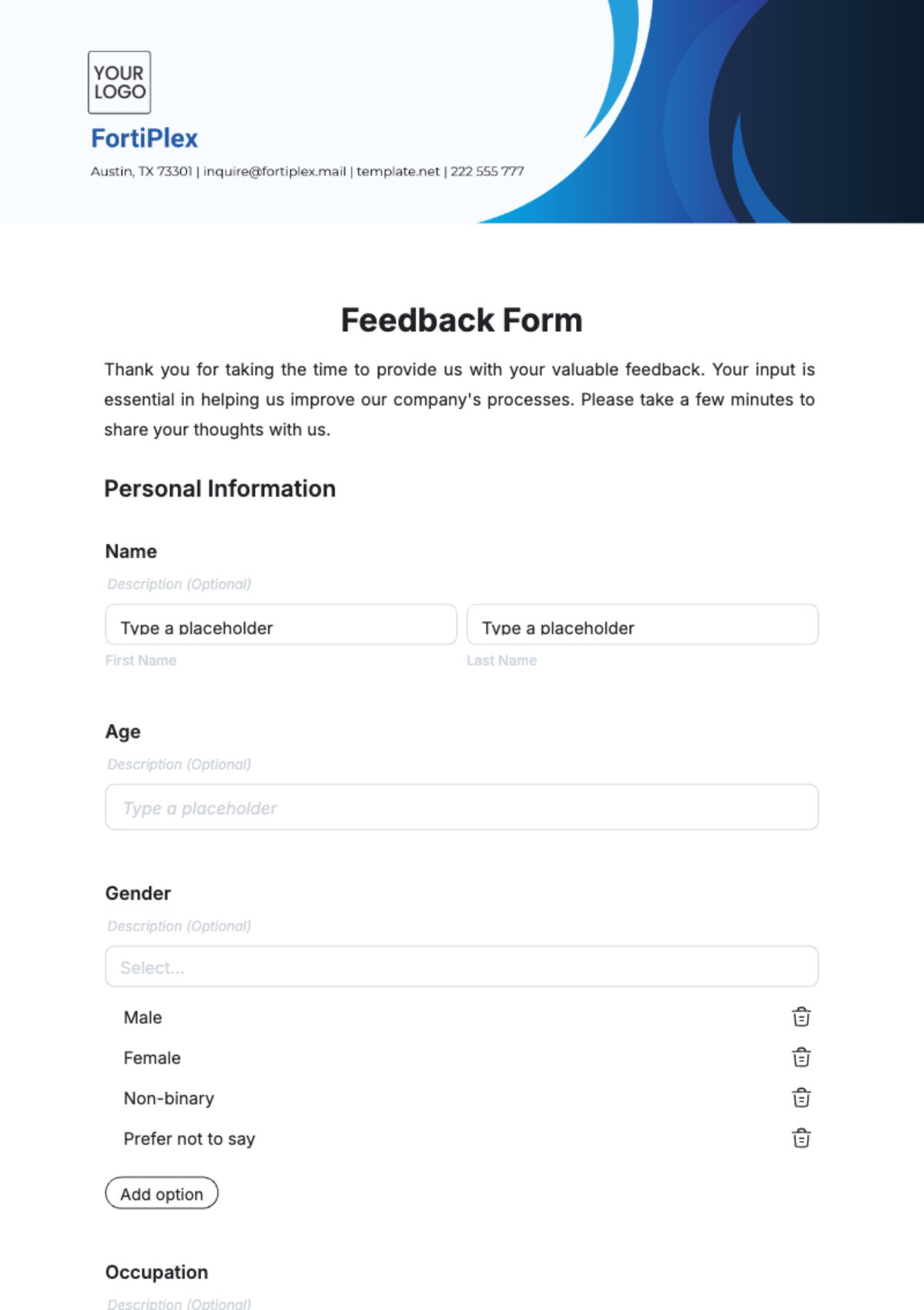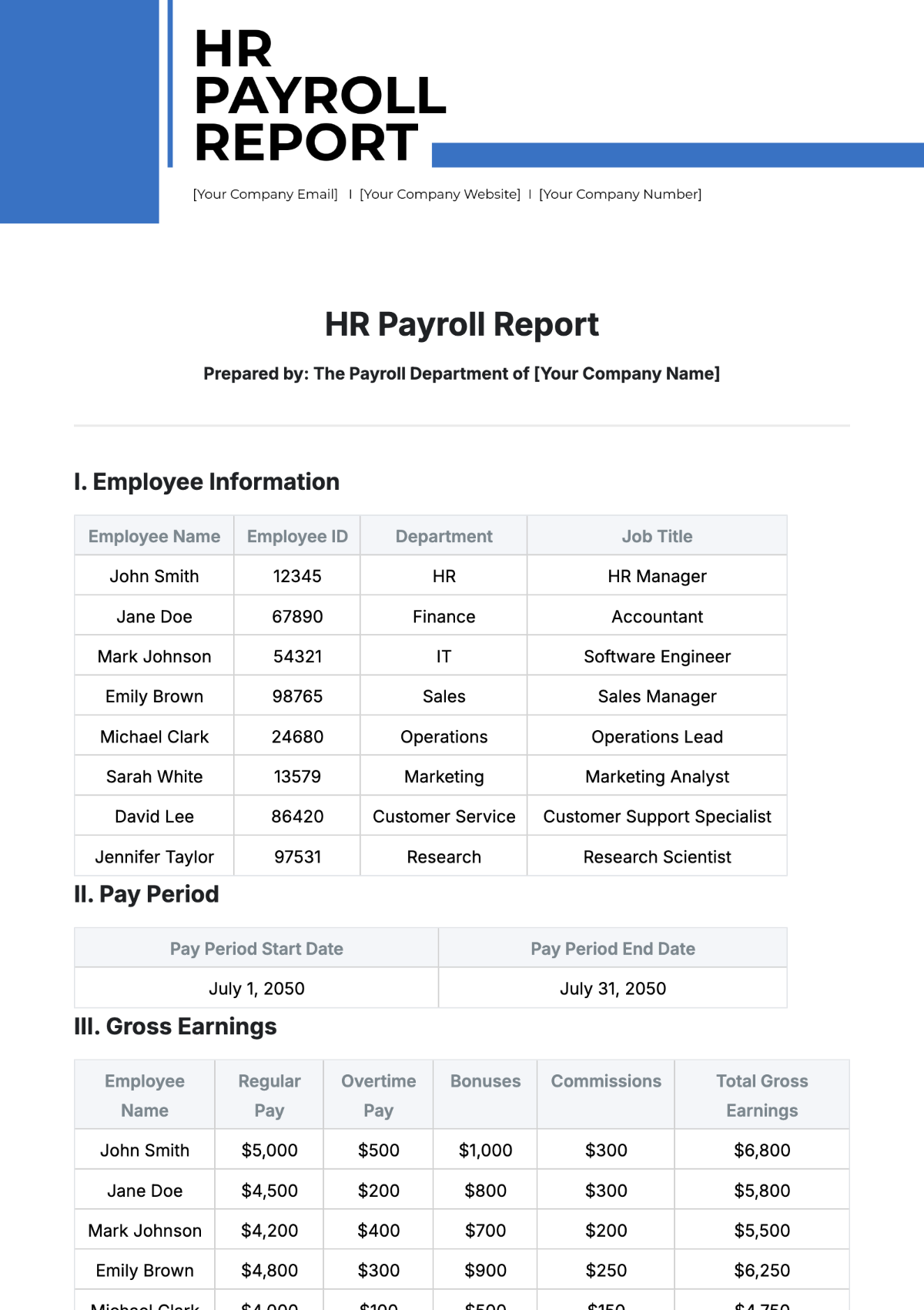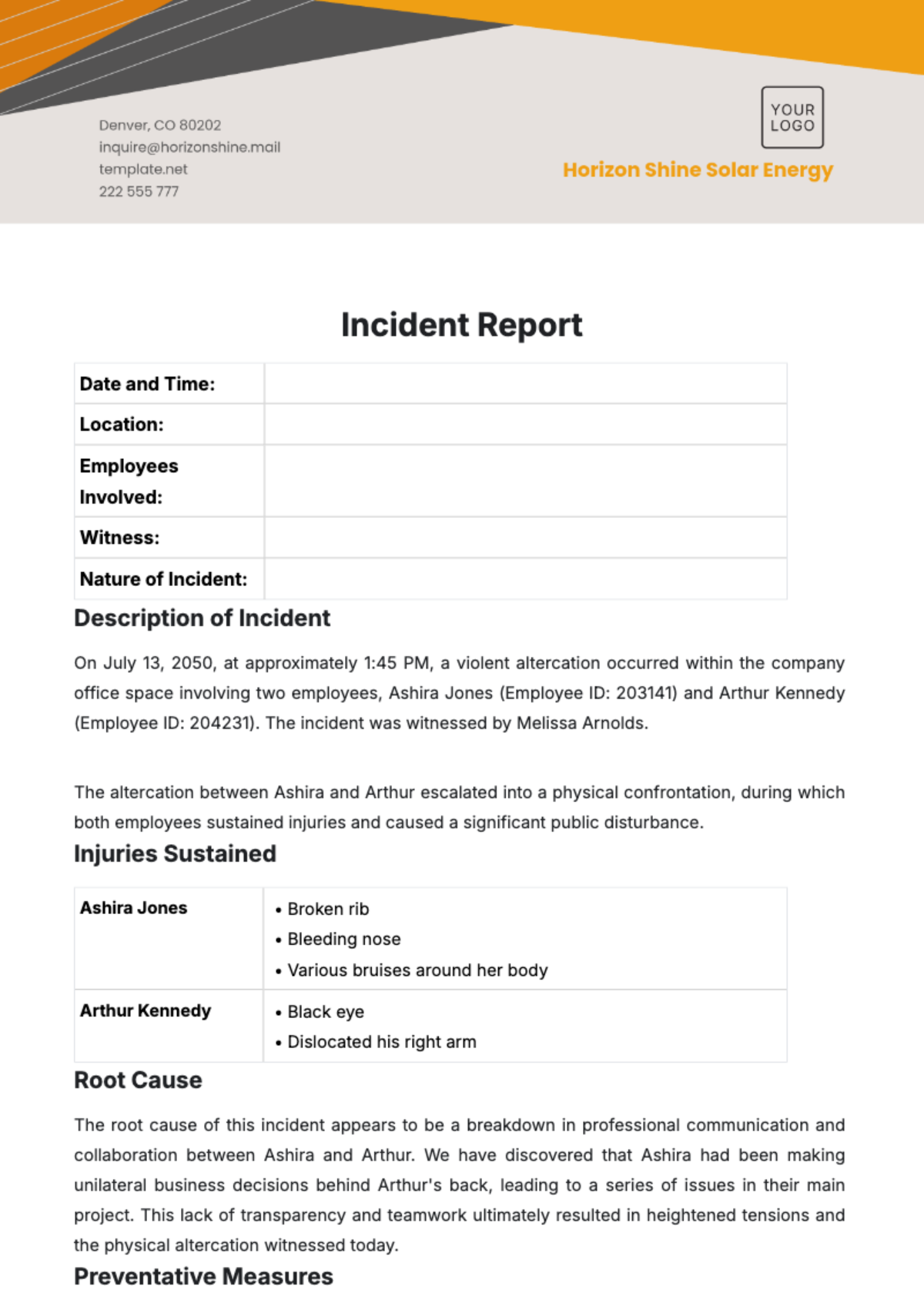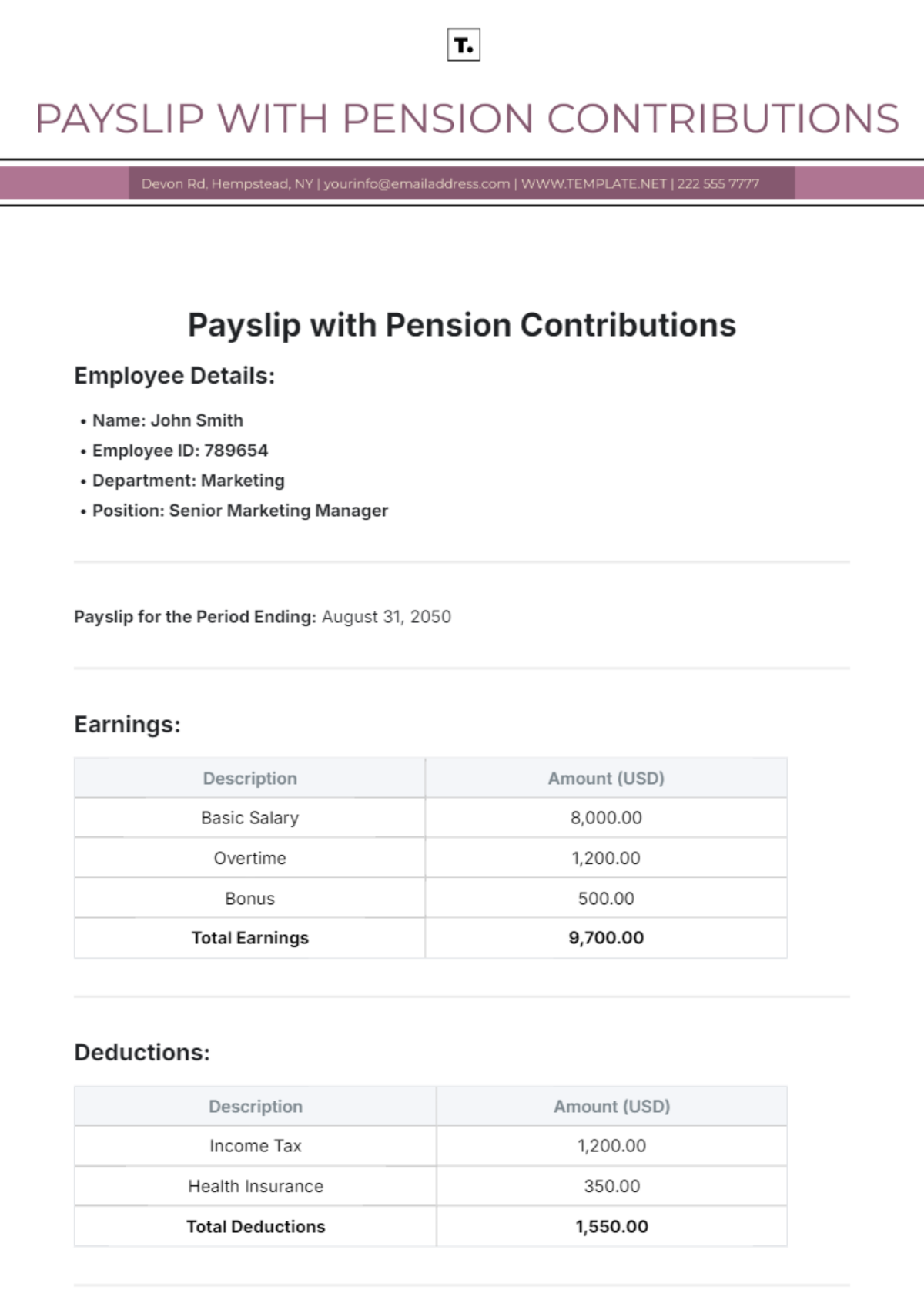Free Diverse Candidate Sourcing Guide HR Template
Introduction
In today's global marketplace, the importance of fostering a diverse and inclusive workplace cannot be overstated. At our organization, we recognize that diversity and inclusion are not just moral imperatives but strategic assets that drive innovation, enhance decision-making, and improve our competitive edge. By embracing a multitude of perspectives, experiences, and backgrounds, we cultivate an environment where creativity thrives, leading to groundbreaking ideas and solutions.
Importance of Diversity and Inclusion in the Workplace
Diversity and inclusion in the workplace mean more than just acknowledging differences among us. It's about valuing and leveraging these differences to achieve superior outcomes. A diverse workforce encompasses a range of identities, including but not limited to race, gender, ethnicity, age, sexual orientation, religion, and disability. Inclusion, on the other hand, is the practice of creating an environment where all individuals feel valued, respected, and able to reach their full potential. Together, diversity and inclusion are the cornerstones of an innovative, agile, and resilient organization.
Benefits of a Diverse Workforce
The advantages of maintaining a diverse workforce extend across all facets of our business:
Innovation: Diverse teams are proven to be more creative and innovative. Our analysis shows that teams with a wide range of backgrounds bring a variety of perspectives to the table, leading to a 35% higher likelihood of outperforming less diverse competitors in innovation.
Better Decision-Making: Diverse groups make decisions faster and more effectively. Studies within our organization have demonstrated that diverse teams make better decisions 87% of the time compared to homogeneous groups, largely due to a wider range of perspectives and more thorough examination of facts.
Market Competitiveness: A diverse workforce enables us to better understand and cater to our global customer base. By mirroring the diversity of our customers within our teams, we've seen a 40% improvement in market share within diverse markets over the past year.
Alignment with the Company's Values
This Diverse Candidate Sourcing Guide is designed to provide our teams with the knowledge, strategies, and tools necessary to attract, engage, and hire a diverse talent pool. Our objectives with this guide are to:
Set clear diversity hiring goals that are aligned with both our strategic business objectives and our commitment to social responsibility.
Enhance our recruitment processes to ensure they are inclusive, equitable, and capable of attracting the best talent from all walks of life.
Build a diverse talent pipeline that not only supports our current hiring needs but also establishes a foundation for sustained organizational diversity.
These objectives closely align with our core values of inclusivity, respect, and continuous improvement. By integrating these principles into every aspect of our hiring process, we reaffirm our commitment to not only being a leader in our industry but also a champion for diversity and inclusion in the business world.
Setting Diversity Hiring Goals
To ensure our efforts in promoting diversity and inclusion translate into tangible outcomes, it's essential to set clear and measurable diversity hiring objectives. These goals not only guide our recruitment strategies but also help us monitor our progress and hold ourselves accountable.
Establishing Clear and Measurable Diversity Hiring Objectives
Our approach to setting diversity hiring objectives begins with a comprehensive analysis of our current workforce composition and an understanding of the gaps and opportunities for improvement. From there, we establish specific, measurable, achievable, relevant, and time-bound (SMART) goals. For instance, if our analysis reveals that women represent only 30% of our leadership roles, a potential objective could be to increase this figure to 40% within three years.
To achieve these goals, we break them down into actionable targets. For example:
Increase the hiring of underrepresented minority groups in technical roles by 20% within the next fiscal year.
Achieve a candidate interview pool that consists of at least 50% candidates from diverse backgrounds for all positions.
Aligning Diversity Goals with Business Outcomes
Our diversity hiring goals are not standalone objectives but are deeply integrated with our overall business strategy. By aligning these goals with key business outcomes, we ensure that our efforts in diversity and inclusion directly contribute to our organization's success. For instance, by diversifying our leadership team, we aim to enhance our decision-making processes, foster innovation, and better reflect our diverse customer base, ultimately driving improved business performance.
We also recognize the importance of inclusion in maximizing the benefits of diversity. Thus, our objectives include measures to enhance the sense of belonging among all employees, ensuring that every team member can contribute to their fullest potential.
Benchmarking Against Industry Standards
To ensure our diversity goals are ambitious yet achievable, we benchmark our objectives against industry standards and best practices. This involves analyzing diversity data from peer organizations and industry-wide studies to understand the broader landscape and identify areas where we can lead or need to catch up.
For example, if the average representation of women in tech roles within our industry is 25%, and our current level is 20%, we might set a goal to reach or exceed the industry average within a specified timeframe. Additionally, we participate in diversity and inclusion forums and networks to stay informed about emerging trends and strategies that can help us advance our diversity hiring objectives.
Understanding Legal Frameworks
Navigating the legal frameworks surrounding diversity and inclusion is crucial for our organization. It ensures that our efforts to create a diverse workforce are not only ethical but also compliant with the laws and regulations designed to promote equal employment opportunities. Understanding these legal frameworks helps us to foster an inclusive environment while mitigating legal risks.
Overview of Equal Employment Opportunity Laws and Regulations
In the United States, several key laws and regulations govern equal employment opportunity and protect employees and job applicants from discrimination. These include, but are not limited to:
Title VII of the Civil Rights Act of 1964: Prohibits employment discrimination based on race, color, religion, sex, or national origin.
Americans with Disabilities Act (ADA): Prohibits discrimination against individuals with disabilities in all areas of public life, including jobs.
Age Discrimination in Employment Act (ADEA): Protects individuals who are 40 years of age or older from employment discrimination based on age.
Equal Pay Act of 1963: Requires that men and women be given equal pay for equal work in the same establishment.
Genetic Information Nondiscrimination Act (GINA): Prohibits discrimination on the basis of genetic information with respect to both employment and health insurance.
Avoiding Unconscious Bias in the Hiring Process
Unconscious bias in the hiring process can undermine diversity efforts and lead to potential legal risks. Bias, even when unintentional, can affect decisions in recruiting, interviewing, and hiring, potentially violating equal employment opportunity laws. To combat this, we implement several strategies:
Training: We provide training for hiring managers and recruitment teams on recognizing and mitigating unconscious bias.
Structured Interviews: Implementing a standardized set of questions for all candidates to ensure fairness.
Diverse Hiring Panels: Including members from various backgrounds in the hiring process to reduce bias.
Blind Resume Review: Removing identifying information from resumes and applications to focus on skills and qualifications.
These measures help ensure that our hiring practices are fair, equitable, and free from bias, aligning with both our values and legal obligations.
Ensuring Compliance with Diversity Hiring Regulations
Compliance with diversity hiring regulations is not only a legal requirement but also a reflection of our commitment to equality and fairness. To ensure compliance, we:
Stay Informed: Regularly update our policies and practices in response to changes in laws and regulations.
Documentation and Record-Keeping: Maintain detailed records of our hiring practices and decisions to demonstrate compliance in the event of an audit or investigation.
Regular Training: Provide ongoing training for HR professionals and managers on the latest compliance requirements and best practices.
External Audits: Periodically engage external consultants to review our hiring practices and ensure compliance with federal, state, and local laws.
By diligently following these steps, we not only adhere to the legal requirements but also reinforce our dedication to creating a diverse, inclusive, and equitable workplace. Compliance with these legal frameworks is integral to our organizational ethos, ensuring that our diversity and inclusion efforts are both effective and lawful.
Building a Diverse Talent Pipeline
Creating a diverse talent pipeline is essential for our organization's long-term success and sustainability. It involves proactive efforts to attract, engage, and nurture candidates from a wide range of backgrounds, experiences, and perspectives. By building a diverse talent pipeline, we not only enrich our workforce but also ensure a robust foundation for innovation, cultural competence, and responsiveness to market needs. This requires a multi-faceted approach, leveraging various strategies to reach potential candidates in different communities and professional circles. Here are some strategies to consider:
Partnering with Diverse Professional Organizations and Networks: By establishing partnerships with organizations that focus on underrepresented groups in the professional arena, we gain access to a broad pool of talented candidates. These partnerships can include sponsoring events, participating in job fairs, and offering workshops or webinars that cater to these communities. This strategy not only helps in sourcing diverse candidates but also signals our commitment to diversity and inclusion.
Utilizing Diversity Job Boards and Forums: Specialized job boards and forums that cater to diverse audiences are invaluable tools for reaching candidates who might not be accessible through traditional channels. Posting our job openings on these platforms enables us to tap into a wider talent pool and attract candidates with diverse backgrounds and experiences.
Engaging with Educational Institutions: Forming relationships with colleges, universities, and vocational schools that serve underrepresented communities allows us to connect with emerging talent early in their career journey. Through internships, scholarships, and career development programs, we can introduce students to our organization and industry, fostering a pipeline of diverse talent.
Leveraging Social Media and Digital Platforms: Social media platforms offer powerful channels to showcase our commitment to diversity and inclusion, attract diverse candidates, and engage with potential talent in authentic ways. By sharing stories, achievements, and opportunities that highlight our diverse workforce and inclusive culture, we can appeal to a broad audience of potential candidates.
Implementing Employee Referral Programs with a Focus on Diversity: While employee referral programs are a common recruitment tool, adding a focus on diversity can enhance their effectiveness. Encouraging our employees to refer candidates from their diverse networks, possibly with incentives for diverse referrals, helps to broaden our talent pool with qualified and diverse candidates.
Hosting and Participating in Diversity-Focused Career Fairs and Events: Engaging in career fairs and events that emphasize diversity allows us to directly interact with potential candidates from various backgrounds. These events provide a platform for showcasing our organization as an inclusive employer of choice and for candidates to learn more about the opportunities we offer.
Each of these strategies contributes to building a diverse talent pipeline by not only sourcing a wide range of candidates but also by demonstrating our commitment to creating an inclusive and equitable workplace. By implementing these approaches, we ensure that our organization remains competitive, innovative, and reflective of the diverse world in which we operate.
Creating Inclusive Job Descriptions
The creation of inclusive job descriptions is a pivotal step in attracting a diverse applicant pool. These descriptions serve as the first point of interaction between our organization and potential candidates, making it crucial to communicate our commitment to diversity and inclusion. Inclusive job descriptions are crafted to welcome candidates from all backgrounds, ensuring that no one feels excluded based on their identity, experiences, or capabilities. This approach not only broadens our talent pool but also aligns with our values of respect, equity, and inclusion.
Language and Terminology That Attract a Diverse Applicant Pool
The language and terminology used in job descriptions can significantly impact the diversity of applicants. It's essential to use inclusive, gender-neutral language that speaks to candidates from various backgrounds. For instance, avoiding gender-coded words (like "aggressive" for men or "supportive" for women) ensures that the job description appeals to all genders. Similarly, phrases that implicitly require physical abilities, unless strictly necessary for the job, can be exclusionary to candidates with disabilities. The goal is to focus on the essential skills and qualifications needed for the job, rather than inadvertently suggesting a preference for a certain type of candidate.
Best Practices
Use Gender-Neutral Titles and Language: Ensure that job titles and descriptions avoid gender-coded words. Opt for terms like "salesperson" instead of "salesman" and use 'they/them' pronouns or simply refer to the 'candidate' or 'applicant'.
Highlight Your Commitment to Diversity and Inclusion: Explicitly mention your organization's dedication to creating a diverse and inclusive workplace in the job description. This can include statements about your values, diversity policies, or inclusive benefits (such as parental leave, accommodations, etc.).
Focus on Essential Qualifications: Clearly distinguish between must-have skills and nice-to-have skills. Emphasize competencies and outcomes over specific educational backgrounds or years of experience, which can unnecessarily narrow the pool of applicants.
Avoid Jargon and Complex Language: Use clear, straightforward language that is accessible to people from various educational backgrounds. This ensures that the job description is understandable to all potential applicants, including those for whom English might be a second language.
Encourage Applications from Underrepresented Groups: Include a statement inviting candidates from underrepresented groups to apply. This can reassure candidates that their application will be valued and considered fairly.
Provide Details on Accommodations: Mention the availability of accommodations for candidates with disabilities during the application or interview process. This signals your organization's commitment to accessibility and inclusion.
Review and Revise Regularly: Job descriptions should be regularly reviewed and updated to ensure they remain inclusive and reflective of the current needs and values of the organization. Consider seeking feedback from diverse employee groups to identify any unintentional bias or barriers.
Implementing these best practices in crafting job descriptions not only enhances the diversity of our applicant pool but also strengthens our employer brand as an inclusive and welcoming place to work. By thoughtfully considering the language and structure of our job descriptions, we take an important step toward creating a more diverse and inclusive workforce.
Enhancing the Recruitment Process
To foster a diverse and inclusive workplace, it's imperative that we enhance our recruitment process to identify, attract, and select candidates from a broad range of backgrounds. This involves implementing practices designed to minimize bias and ensure that all candidates have an equitable opportunity to demonstrate their skills and potential. By refining our recruitment strategies, we not only make strides toward achieving our diversity goals but also enrich our organization with a variety of perspectives and experiences that drive innovation and growth.
Training Hiring Managers and Recruiters on Diversity and Inclusion
A key aspect of enhancing the recruitment process is providing comprehensive training on diversity and inclusion for hiring managers and recruiters. This training focuses on understanding the value of a diverse workforce, recognizing unconscious bias, and adopting inclusive hiring practices. By equipping our hiring teams with the knowledge and tools to make unbiased decisions, we can ensure that our recruitment practices are fair, equitable, and aligned with our organizational values. This training is conducted regularly to keep pace with evolving best practices and to reinforce our commitment to diversity and inclusion.
Implementing Blind Recruitment Practices to Reduce Bias
Blind recruitment involves removing personally identifiable information from resumes and applications, such as names, gender, age, and education, that may unconsciously influence hiring decisions. This practice helps to focus the evaluation process solely on the candidate's skills, experience, and suitability for the role, reducing the potential for bias. By implementing blind recruitment, we aim to create a more level playing field for all candidates, ensuring that opportunities are based on merit rather than demographic characteristics.
Structuring Interviews to Assess Skills and Cultural Add
Moving away from the concept of "cultural fit" to "cultural add" allows us to appreciate how a candidate's unique background and experiences can enrich our organizational culture. This approach shifts the focus from seeking candidates who "fit in" with our existing culture to those who can contribute new perspectives and ideas. Interviews are structured around competency-based questions and scenarios that assess how candidates' skills and experiences align with the role's requirements and how they can contribute to our team's diversity and dynamism.
Providing Diversity Training for Interview Panels
To further ensure that our recruitment process is inclusive, we provide diversity training for all members of our interview panels. This training covers the importance of diversity and inclusion, strategies for minimizing bias during interviews, and techniques for assessing candidates' skills and potential contributions objectively. By preparing our interview panels to approach the selection process with an inclusive mindset, we reinforce our commitment to building a diverse workforce and create an interview environment that respects and values the uniqueness of each candidate.
Through these enhanced recruitment practices, we aim not only to attract a diverse range of candidates but also to ensure that our hiring process reflects our commitment to diversity, equity, and inclusion. By training our teams, implementing bias-reducing strategies, and focusing on the broad contributions candidates can make, we lay the groundwork for a more inclusive and dynamic organization.
Measuring Success and Continuous Improvement
For our diversity and inclusion efforts to be effective, it's crucial to measure success and commit to continuous improvement. Establishing key performance indicators (KPIs) allows us to track our progress, identify areas for enhancement, and make data-driven decisions to further our diversity goals. This approach not only helps us quantify the impact of our initiatives but also ensures that our commitment to diversity and inclusion is reflected in tangible outcomes. Regular review and adaptation of our strategies, based on these metrics, foster an organizational culture that values growth, learning, and inclusivity.
Key Performance Indicators (KPIs)
To effectively monitor our progress, we've identified several KPIs that are critical to our diversity and inclusion objectives. These metrics provide a clear picture of where we stand and where we need to focus our efforts moving forward.
KPI | Description | Target |
|---|---|---|
Diversity Hiring Rate | Percentage of hires from underrepresented groups in our workforce. | Increase by 15% annually |
Representation in Leadership | Proportion of underrepresented groups in leadership positions. | Achieve 30% within 3 years |
Employee Retention Rate by Demographic | Retention rates for employees from diverse backgrounds compared to the company average. | Parity or exceed company average |
Diversity of Candidate Pipeline | Percentage of candidates from underrepresented groups at each stage of the hiring process. | 50% of the candidate pool |
Employee Satisfaction with D&I | Results from surveys assessing employees' perceptions and satisfaction with diversity and inclusion efforts. | Score of 4.5 out of 5 on annual survey |
Participation in D&I Training | Percentage of employees completing diversity and inclusion training programs. | 100% annually |
These KPIs are reviewed quarterly to assess our progress and adjust our strategies as needed, ensuring that we remain on track to meet our diversity and inclusion goals.
Case Studies and Best Practices
Drawing from successful diversity and inclusion initiatives, both within and outside our organization, offers valuable insights into effective strategies and practices. These case studies highlight the impact of thoughtful, targeted efforts to enhance diversity and inclusion.
Example 1: Implementing a Mentorship Program
A mentorship program designed for employees from underrepresented groups resulted in a 25% increase in promotions within this group over two years. This program provided targeted career development, networking opportunities, and support, demonstrating the power of mentorship in advancing career growth and retention.
Example 2: Partnership with Educational Institutions
By partnering with historically Black colleges and universities (HBCUs) and women's colleges, an organization significantly broadened its talent pipeline. This initiative led to a 40% increase in applications from graduates of these institutions, enhancing the diversity of the candidate pool.
Example 3: Inclusive Leadership Training
A global company implemented mandatory inclusive leadership training for all its managers, focusing on unconscious bias, cultural competence, and inclusive decision-making. Post-training surveys showed a 30% improvement in employees' perceptions of managerial support and inclusiveness, highlighting the importance of equipping leaders with the skills to foster an inclusive environment.
These examples underscore the importance of targeted initiatives, leadership commitment, and ongoing evaluation in driving meaningful progress toward diversity and inclusion objectives. By learning from these best practices and continuously adapting our strategies based on measured outcomes, we can ensure that our organization remains a leader in cultivating a diverse, inclusive, and equitable workplace.












